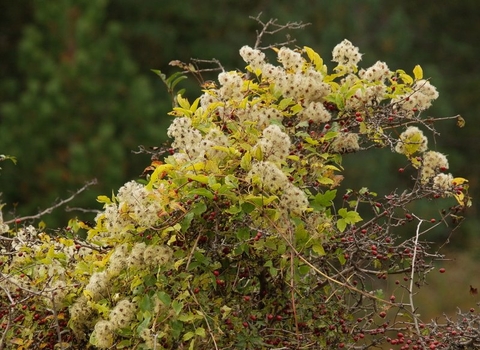
©Hermann Falkner
Traveller's-joy
The fluffy, white seed heads of traveller's-joy give it the evocative, alternative names of 'old man's beard' and 'Father Christmas'. A climbing plant, it can be seen scrabbling over hedgerows and in woods.
Scientific name
Clematis vitalbaWhen to see
July to DecemberSpecies information
Category
Statistics
Height: can climb up to 3m and moreCommon.
